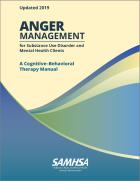This report provides findings from a qualitative analysis of evidence-based and culturally relevant behavioral health practices offered at NNEDLearn, a SAMHSA training, offered from 2011 to 2020. It includes an overview of NNEDLearn, case studies, strategies and lessons learned, and conclusion.
Dashboard: Filter Bricks
Main page content


This chartbook uses combined 2015 to 2019 data from the National Survey on Drug Use and Health (NSDUH) to present nationally representative estimates of mental health service utilization among adults aged 18 or older and adolescents aged 12 to 17 within different racial/ethnic groups in the United States. The percentages are annual averages.

The EAP Prescription Drug Toolkit and Fact Sheets provide guidance related to counseling, referrals, and follow-up services (e.g., alternatives to prescription drugs, workplace drug misuse and relapse prevention, dangers of combined drug use, screenings, and evaluations before returning to work).

The book is composed of SAMHSA’s “National Guidelines for Behavioral Health Crisis Care: Best Practice Toolkit” and related papers on crisis services. The toolkit reflects relevant clinical and health services research, review of top national program practices and replicable approaches that support best practice implementation. The related papers address key issues relevant to crisis services, homelessness, technology advances, substance use, legal issues impacting crisis services, financing crisis care, diverse populations, children and adolescents, rural and frontier areas, and the role of law enforcement.

This updated manual contains a 12-week cognitive–behavioral anger management group treatment model. The content includes specific instructions and suggested remarks for group leaders, and exercises for group members. This model will work in a variety of clinical settings, and with diverse audiences.

This advisory for behavioral health practitioners provides a brief overview of complementary health approaches. It describes the practices and products that are considered complementary, and explains how practitioners can help patients understand the benefits and risks.

This manual provides guidelines for the operation of opioid treatment programs. It covers patient assessment, treatment planning, and recovery care. The manual also offers guidance for medication-assisted treatment for methadone and buprenorphine, and overdose and relapse prevention.

This brochure provides people living with chronic pain and mental illness, substance use disorders, or both with strategies for working with their treatment and service providers to decrease pain without negatively impacting recovery. It explores counseling, exercise, and alternative therapy, and medications.

This handbook reviews Medicaid and its role in financing services and treatment for mental illness and substance use disorders. It discusses services included in state Medicaid plans and other factors related to Medicaid, such as reimbursement.

This resource guide presents healthcare professionals working with people living with physical and sensory disabilities with information about substance use disorders, including risk factors and warning signs. It also discusses screening, types of substance use services, and strategies for helping clients.

